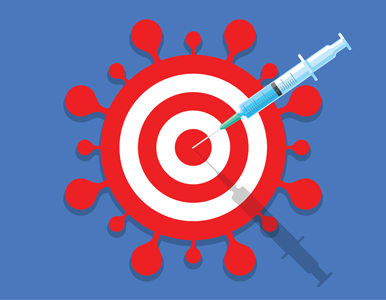
Vaccination evolved out of a centuries-old practice called inoculation. Smallpox inoculation, or variolation, involved taking some of the matter in smallpox blisters and introducing this matter to an uninfected person who would then get a milder case of smallpox. Variolation was practiced in Asia, Africa, and Turkey before spreading to Europe and the Americas.
English physician Edward Jenner is credited with developing the first vaccine. In the 1790s, Jenner noticed that milkmaids were getting cowpox sores on their hands but were immune to smallpox, which had a 30 percent fatality rate. Jenner took the cowpox matter and applied it to an uninfected person to prevent smallpox. This led to the first eradication of a first human disease nearly two centuries later. In fact, the word vaccine comes from the Latin root vacca—or cow.
Today, vaccines are available to protect against more than 20 different diseases, and more are under development. It typically takes about 10 to 15 years to develop a safe, effective vaccine, navigate preclinical and human trials, secure approval from a regulatory agency like the US Food and Drug Administration, and manufacture the vaccine for distribution.
Some people are predicting that we can have a vaccine for COVID-19 in as little as 12 to 18 months, an unprecedented timeline. A few things may help speed up the process. Research on vaccines for other coronaviruses like SARS-CoV and MERS-CoV is already underway, which has given vaccine researchers a head start. Other experimental vaccine types that use the same genetic sequence for the SARS-CoV-2 virus are also being studied.
For pathogens that rapidly change and have many strains, like influenza, new vaccines are developed annually. The World Health Organization (WHO) consults Collaborating Centers, like the US Centers for Disease Control and Prevention (CDC), and key laboratory and research representatives to review data shared by more than 100 countries in order to identify which flu strains will likely be circulating in the upcoming season. Three or four strains are then recommended to include in the vaccine, which then takes approximately six to eight months to develop, test, approve, and produce for public use.
Vaccines are distributed through public, government-operated immunization programs—like the Vaccines for Children (VFC) program in the US or the Expanded Programme on Immunization (EPI) in many countries—as well as through the private market. This year, more than 50 low- and lower-middle-income countries are eligible for financial support through Gavi, the Vaccine Alliance, a public-private partnership that has helped vaccinate more than 760 million children since 2000. The WHO estimates that, worldwide, immunization saves two to three million lives each year.
Vaccines are often the target of misinformation and the anti-vaccine movement is a growing challenge around the world. Consulting scientific experts, sources like the CDC and WHO, and healthcare providers is key to understand not only how vaccines work in the US, but how critical these safe, effective tools are for preventing disease.